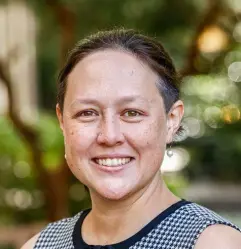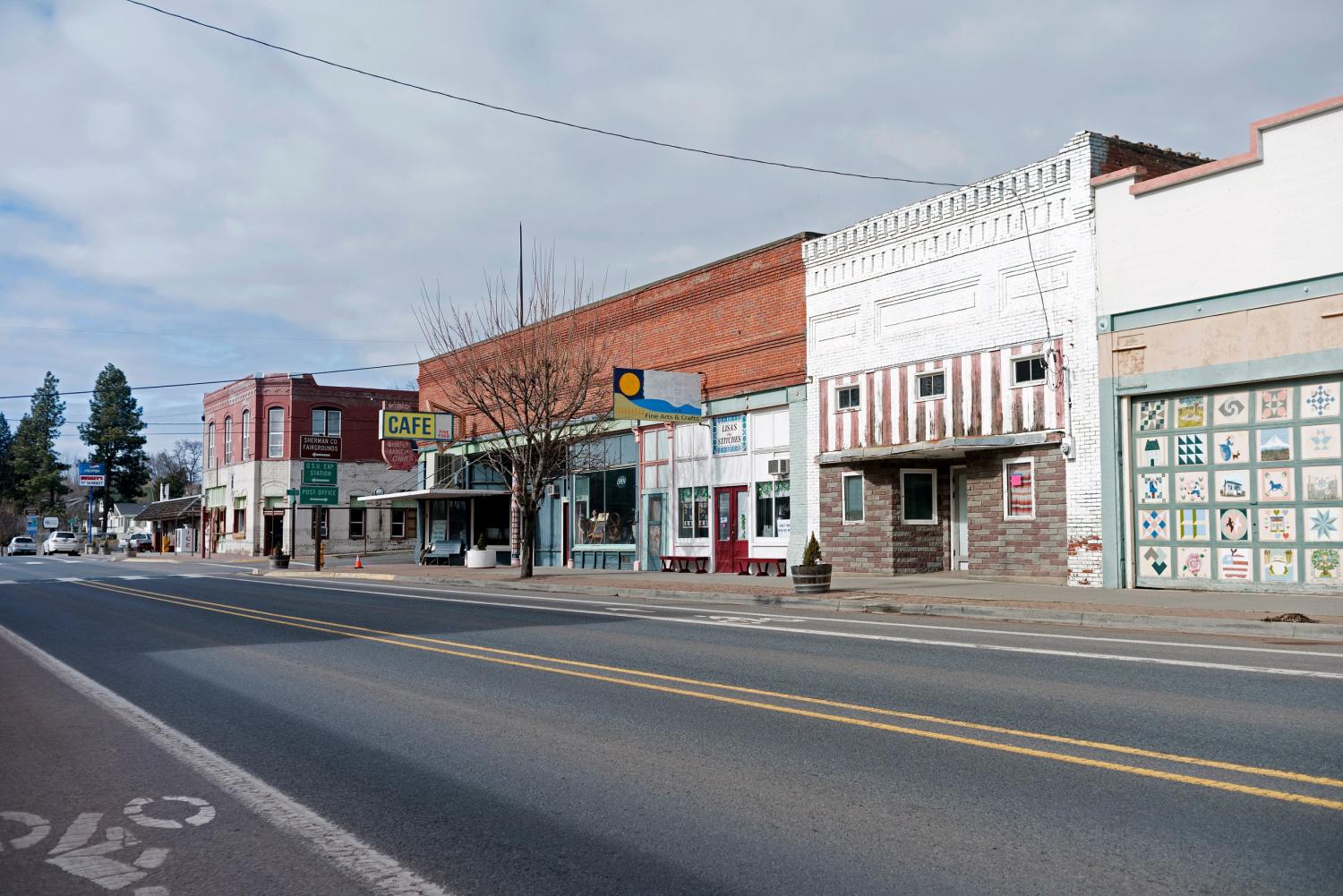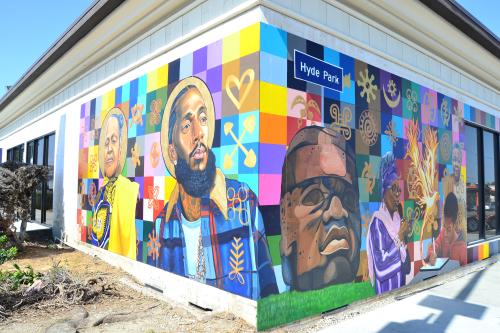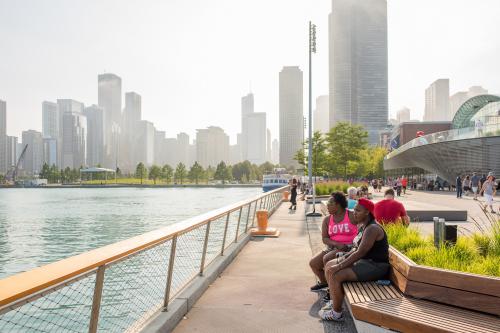Contents
- I. Introduction
- II. Assessing need: Choices and methods
- a. Approaches for assessing need
- b. Our analysis
- III. Findings
- IV. Conclusion
I. Introduction
On May 25, 2020, George Floyd died on a Minneapolis street with the knee of a white police officer on his neck. Days later, an autopsy revealed that Floyd also had COVID-19. His story is not one of bad luck or bad behavior. Rather, it is a story of the layered crises of the pandemic and America’s racial injustice, which have vividly exposed a particular geography of economic disadvantage, disaster vulnerability, and health disparities that disproportionately impacts Black and Latino or Hispanic communities. These spatial dynamics are the result of decades of intentional policy decisions—including redlining, systematic disinvestment, destructive infrastructure, and mass incarceration—that have established and intensified economic and racial segregation, limited social mobility (especially for people of color), perverted the relationship between police forces and Black communities, and undercut the social determinants of health in specific neighborhoods.
For this reason, anti-poverty and justice-seeking policymakers and advocates have long pursued policy and practice solutions targeted toward what we refer to here as “places in need.” There are numerous, and sometimes overlapping, frameworks for identifying these places, and many approaches for how to address their challenges. These policy design choices matter, determining who and where can benefit, who gets left out, and how thinly money is spread or concentrated. The federal government has directly invested over $95 billion (some in grants, but mostly in foregone tax revenue) in place-based policies for economic development over the past 25 years. But has this money reached the right places and people?
Answering this question requires an expansive evaluation that assesses the criteria used to select places in need, and then maps the connections between the policy intervention and intended outcomes. In this brief, we examine the first part of this process: how “need” is defined and where those definitions lead. The presidential election season makes this review especially timely; as policymakers and candidates evaluate existing policy achievements and develop new proposals, they have an opportunity to iterate and improve on these efforts.
To understand how different designations of “need” function, we focus on classifications that target neighborhood-level conditions. We reviewed the literature and state of practice to identify eight current national classifications—four currently in use in policy and planning at the federal level, and four from policy and academic research. By looking at both practice and research, we evaluate the state of practice and offer a comprehensive review of alternatives to improve current policy and develop new place-based policies moving forward.
This brief first differentiates these designations by the number and location of the neighborhoods and populations they respectively capture. It then examines patterns in demographics, socioeconomic status, and the built environment across them. Finally, it compares the places identified by these designations to the “other” America—places not identified as “high-need” by any designation—to understand how the scope of place-based inequality impacting American communities varies depending on the nuances of how “places in need” are defined. Our analysis reveals steep disparities in the geographic concentration of poverty by race that explain how George Floyd’s life was defined not just by poverty, but by systemic racism.
II. Assessing need: Choices and methods
Researchers within and outside of federal agencies have constructed numerous approaches to understand the geography of need in the U.S., using different units of analysis, methods, and measures. We describe here the basic variations among those approaches and provide an overview of the methodology we used to compare and contrast them.
a. Approaches for assessing need
- Policies and programs target different geographies
The word “place” means different things to different people, even when speaking of it as a unit of space. It could be a single street address, a city block, plaza, park, neighborhood, city, county, region, or an entire country. In the specific context of inequality in the U.S., scholars and policymakers have most often looked at census tracts, ZIP codes, municipalities, and counties. Another set of research and policy looks at regions, but is conceptually distinct.
The success of a policy is contingent on a good fit between the definition of “place” used, the implementation, and the goals of a specific place-based intervention. There is no one-size-fits-all answer.
- Policies and programs can use absolute or relative measures
Broadly, we can understand need in two ways: either in absolute or relative terms.
A policy that applies an “absolute” criterion implicitly sets a benchmark that defines a line between sufficiency and need—and thus, a goalpost that could be reached. For example, Joe Biden’s presidential campaign has proposed a research and development “challenge” that uses Rep. Jim Clyburn’s (D-S.C.) 10-20-30 framework, whereby 10% of investments would be targeted to persistent poverty counties (geography) in which 20% or more of the population has lived below the poverty line (a specific dollar amount of income) for the last 30 years. Any county in the U.S. that meets this threshold is identified as “high-need.”
Approaches that define need in “relative” terms, on the other hand, frame need as a function of inequality, and remain meaningful as long as inequality exists. For example, the federal statute that defines low-income communities for New Markets Tax Credit eligibility and other programs includes places where the median family income is below 80% of the greater statewide or metropolitan area median family income (based on location). By this definition, as long as there is substantial variance in family income, there will be low-income communities.
Use of one or the other approach will affect the size of the population reached by a particular policy, and whether that group changes over time.
- Policies and programs define need using varying components
The examples we have given so far suggest that poverty and need are interchangeable. However, there are potentially countless dimensions to need across realms such as health, education, the environment, safety, relationships, etc. While low incomes are often highly correlated with other aspects of need, many researchers and policymakers have noted that poverty is not a perfect or complete proxy for every issue. For example, in addition to poverty and income variables, the Centers for Disease Control’s Social Vulnerability Index and the Economic Innovation Group’s Distressed Communities Index also include employment, education, demographic, and housing characteristics.
Whatever way they are measured and located, programs that are ostensibly designed to address need do so using a variety of tools. These might be tax incentives (such as waived capital gains taxes or tax credits), grants or other direct aid, regulatory relief, technical assistance, or some combination. These tools are often indirect ways of improving the local economic environment, rather than directly aiding individuals in need.
b. Our analysis
For this paper, we examine both existing federal designations and research-based methods for understanding need in order to comprehensively gather insights that can be useful in policy reform and development moving forward. We found eight designations: four used by existing policy tools and public planning functions, and four purely analytical designations that researchers have employed to understand and describe neighborhood conditions.
The geographic unit of analysis is not just a minor technical issue in place-based policy design. Getting the “where” of place-based policy incorrect can yield unintended or suboptimal consequences, including bias, exclusion, limited usage, minimal impacts, or even harm. The goal of a particular policy or program may necessitate different scales of geographic targeting, but for the purposes of this analysis, we use census tracts as a common point of comparison to assess the impacts of scoping the definition of “need” in different ways.
The eight designations we review are:
- Low-Income Communities (LICs) as defined by federal statute since 2000 (for the New Markets Tax Credit). These are census tracts that either have a poverty rate of at least 20% or a median family income below 80% of the greater statewide or metropolitan area median family income (based on location).
- Treasury Department and Internal Revenue Service designations of (in 2018) Qualified Opportunity Zones (OZs), which are chosen by states from among the aforementioned LICs.
- Our own adaptation of the U.S. Department of Agriculture Economic Research Service’s classification of persistent poverty counties, as used in Rep. Clyburn’s 10-20-30 formula. We use their method to identify persistent poverty tracts (PPT). We use Social Explorer’s estimates for the 1990 census on the 2010 census tract map, and end with the 2018 American Community Survey, a 28-year time period approximating the 30-year criteria of the ERS’s definition.
- The Centers for Disease Control and Prevention’s Social Vulnerability Index (SVI), first published in 2011, which ranks census tracts on 15 factors and is intended to be used for disaster response planning.
- Diversity Data Kids’ Child Opportunity Index0 (COI), launched in January 2020, comprehensively measures the quality of resources and conditions for children by census tract using 29 indicators.
- The Robert Graham Center’s Social Deprivation Index (SDI), initially developed in 2012, is constructed for each census tract based on seven neighborhood characteristics to understand social determinants of health.
- The University of Wisconsin School of Medicine and Public Health’s Area Deprivation Index (ADI), first posted in 2018, ranks census block groups on 17 socioeconomic disadvantages to inform decisionmaking on health policies and interventions.
- The Economic Innovation Group’s Distressed Communities Index (DCI), first applied in 2016, is designed to measure the economic well-being of communities by combining seven metrics—including job creation and business formation—at the ZIP code level.
These approaches for designating need function differently because they were created for varying purposes using different data inputs and methods. Table 1 summarizes the inputs of these designations across three dimensions of the Bass Center’s transformative placemaking framework—economic, physical, and social—to see how holistic their approaches are. About half of the designations cover a wide variety of indicators across the three dimensions of need in a community, while the DCI, LICs/OZs, and PPTs mainly define need in economic terms.
One commonality among all eight designations is the use of poverty rates as a key component of need. Employment status, income, and levels of education are also included in almost all approaches as major economic indicators. The SDI, SVI, and ADI include crowded housing and lack of access to a vehicle as measures to identify physical need in a community. In terms of social environment, the share of single-parent households is the only commonly used metric among four indices. The SVI stands out with relatively comprehensive coverage of the social domain. The COI has by far the largest range of components, representing a major data investment and an attempt to comprehensively measure the broad concept of “opportunity.”

We then analyzed seven out of these eight designations to map what people and places are identified as high-need. We looked for areas of commonality and difference between the designations, as well as overall size and scope. The Distressed Communities Index (DCI) differs from the other seven designations in that it is based on ZIP codes. Therefore, the DCI is included below only where previously reported analytical results were available.
III. Findings
Finding 1: The different approaches used in each classification system yield large variations in both the number of communities identified as “high-need” and their location.
Table 2 identifies areas designated as high-need based on each approach’s own threshold. For continuous indices with no thresholds, we classify tracts in the top quintile as high-need areas. This translates to census tracts in the top 10% of the SVI scores; tracts with scores at or below the 2015 COI’s 20th percentile; tracts in the top 20% of the SDI scores; and tracts that have at least half of its block groups with scores at or above the ADI’s 90th percentile.
Different designations capture very different of places—and hence, people.
As definitions and thresholds for determining “need” vary, they capture different shares of census tracts and population. Four approaches—the SVI, ADI, OZs, and PPTs—cover about the same share of high-need areas and populations within them. Each includes approximately 30 million people in about 8,000 neighborhoods, or roughly 10% of the U.S. population.
Designations that use a relative standard to define need (such as bottom quintile) tend to be far more expansive. Thus, the DCI, COI, and SDI classify roughly double the number of people and places as high-need. Similarly, the universe of low-income communities (defined by statute) in the U.S. is very large, including 42% of all census tracts and 39% of the total U.S. population.
 While multiple approaches include roughly the same number of people and places, they aren’t all the same people and places.
While multiple approaches include roughly the same number of people and places, they aren’t all the same people and places.
The regional distribution of areas designated as high-need differs significantly by approach. All of the designations locate a plurality of high-need American neighborhoods in the South (Figure 1). But the relative shares in the West and the Midwest vary dramatically between indices. For example, almost 30% of tracts with high vulnerability scores on the SVI are in the West, and only 15% are in the Midwest. At the other end of the spectrum, the ADI locates only 13% of high-need tracts in the West, and 27% in the Midwest. Thus, while both designations include roughly the same number of people and places, their regional emphases are distinct.
The designations also yield differing numbers of rural and urban communities. For example, the SVI and SDI emphasize urban population centers, with almost half of high-need tracts located in urban cores, while only 38% of OZs are located there (Figure 2). In fact, of the designations we reviewed, OZs include the largest share of rural tracts, which may be a result of the role that state governors played in the zones’ selection. On the other hand, of all the designations we reviewed, the SDI puts the most weight on a household’s lack of a car, a normative decision that locates the majority of high-need tracts in urban core counties.

 Why it matters:
Why it matters:
Policymakers need to be conscious of these variances at the policy design stage. While high-need places in different regions of the country or across the urban-to-rural continuum have some commonalities—high unemployment, limited internet access, and high rates of uninsured people—people in these places may face distinct demographic profiles (e.g., age distribution, race, language affinity) and structural challenges that have direct implications for the kinds of policies and partners required to meet their needs.
For example, while, on average, 27% of PPT residents have not completed high school, this rate is only 20% for LICs (Table 4). It is worth considering, therefore, whether LICs or regions might be a better framework for the Biden campaign’s R&D challenge. Either geography would direct resources to high-need places that have relatively higher educational attainment levels than those in the PPTs of the 10-20-30 framework. Higher numbers of more educated workers might be important to a program aimed at innovation and technology.
Finding 2: Regardless of the measures used in each classification system, all reveal that poverty is highly spatialized for people of color in a way that it is not for white people.
An analysis of all eight designations reveals that not only do Black, Latino or Hispanic, and Native American people have incomes below the poverty line far more frequently, poor people of color are also isolated and clustered together.
For example, only 10% of the U.S. white population is poor, and even under the most expansive definition (Low-Income Communities), just half of poor whites live in areas designated as high-need. For most people of color, however, it’s a very different story: Over 80% of poor Black people and three-quarters of poor Latino or Hispanic and Native American people live in LICs.
Table 3 presents the complete set of estimates of the spatial distribution of American poverty by race under different designations of high-need areas. It shows that, regardless of which specific measures are used to define these communities, poor people of color are far more likely to live in them than poor whites are.
 Why it matters:
Why it matters:
These distributions reflect the historic and continuing impact of racism on American lives, demonstrating that while low-income people of color and low-income white people may share similar economic circumstances, they quite literally often live in different worlds. That we observe this dramatic variance in the geographic distribution of low-income people of color (especially Black people) today, over a century and a half after the end of slavery, speaks to the hydra-like nature of segregation in the United States. As one policy or practice that isolates or confines is overturned, another takes its place. For example, attempts to desegregate schools in the 1950s (mostly court-ordered) were sabotaged by the redrawing of school district lines, so that today’s schools are mostly more segregated than neighborhoods.
However, these disparities also indicate the potential for place-based policy to address the needs of people of color and be a tool for restorative justice—if policymakers get it right.
Finding 3: All high-need communities, across designations, fare poorly on a range of measures when compared to other communities.
In general, the use of income criteria to identify high-need neighborhoods logically finds that they have significantly lower median household incomes and higher unemployment rates than census tracts not identified as high-need by any of the eight indices examined here (noted in Table 4 as “other”). But other stark differences exist among these community groups:
Regardless of income, all racial groups except whites and Asian Americans are overrepresented in high-need areas and underrepresented in other areas.
Latino or Hispanic Americans are the most common racial group in three out of the seven designations (PPT, SVI, and SDI), and white Americans are the plurality in COI, ADI, OZs, and LICs. While overrepresented relative to their share of the U.S. population overall, Black Americans do not represent a relative majority in any of the designated place-groups. This demonstrates that while place-based policy is a symmetrical response to powerful spatial aspects of systemic racism, these policies as a whole have the potential to benefit members of all racial groups.
Residents of high need areas are far more likely to work in low-wage service occupations.
Across designations, residents of high-need areas are approximately twice as likely to work in service occupations—including health care support, firefighting, law enforcement, food preparation and serving, building groundskeeping and maintenance, and personal care—than residents of other places (Table 4). Most of these occupations are in sectors dominated by low-wage work, where women and people of color are highly overrepresented. For example, 84.5% of health care support workers are women. Asian Americans are only 6.5% of the population, but they are 46.4% of personal care service workers. And almost a quarter of workers in leisure and hospitality are Latino or Hispanic, though they make up less than 18% of the U.S. population.
High-need areas face other structural disadvantages that are closely intertwined with their economic need.
In high-need areas, a much higher percentage of households, on average, have no internet access, no health insurance, and live in severely crowded housing units, all at rates which are more than double the average of “other” tracts. Households in these areas are also more likely to be cost-burdened by housing, even as the homeownership rate is almost half the rate of “other” tracts.
 Why it matters:
Why it matters:
These place characteristics aren’t simply benign, associated factors of communities with high concentrations of low-income people—they are compounding factors that further effect overall well-being. For evidence, look no further than the COVID-19 pandemic, whereby residents of high-need areas are disproportionately working in the service occupations most likely to be exposed to both the virus and its subsequent economic impacts.
Over the longer term, these conditions—created by a host of discriminatory policies and practices—have actually suppressed the ability of residents in high-need communities to access employment and build wealth. In turn, this prevents them from further investing in their homes and communities, or having the resources to move to a different neighborhood. As the above analysis shows, there are poor people of every race. But only poor people of color are systematically confined in poor places.
IV. Conclusion
The United States is a country of extreme and growing inequality that limits opportunity for low-income people of every race. And place affects an individual’s ability to access almost every dimension of opportunity, including education, health, the internet, jobs, and quality housing. People of color are disproportionately represented across every measure of neighborhood-level need we could find, even after taking income into account. It is no coincidence our nation is facing a reckoning over racial justice in the midst of this pandemic.
Public policy—not simply personal racial animus—created this pattern of residential segregation. It will take policy reform and a proactive, place-based approach to mitigate the harm caused by those policies. This approach will need to be smarter than past attempts in how they are crafted to respond to need and change the conditions of life for the millions of Americans like George Floyd, who deserve not only to survive, but to thrive.
The Bass Center’s research on place-based policy has recently examined how to empower places to lead, rather than simply injecting outside resources. In future research, we will explore additional ways to improve place-based policy by not only targeting places’ needs, but recognizing and leveraging their assets as well.








